Not Just for Humans: Exploring Dog Root Canal Treatment Options
We’ve been taking care of our sweet girl Macy—a 5 to 6-year-old German Shepherd—for months now, helping to bring her from emaciated and fearful to happy and healthy. One of the steps before Miss Macy can find her forever home is to give her a dog root canal. When we heard that she had damaged teeth and would need a root canal treatment, we had a lot of questions.
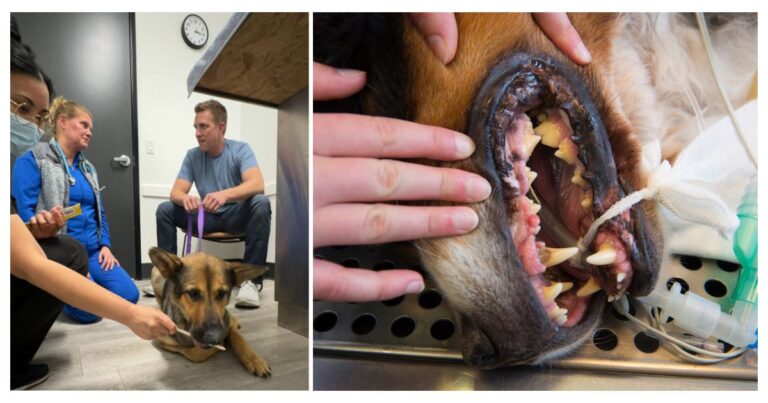
We had LOTS of Questions!
- How do veterinary dentists perform dog root canals?
- What is the difference between a dog tooth extraction VS root canal
- how do you know which procedure your dog needs?
- How much would a dog root canal cost
- What would life look like for this dog after having her broken teeth repaired?

If your dog needs dental work done and you’ve got questions about root canal therapy for canines, you’ve found the right place! Here’s what you need to know to get your dog the right care.
What is Dog Root Canal Therapy?
Teeth have long roots that extend into the gums. The term “root canal” refers to the center of the root of the tooth where nerve tissue and blood vessels are stored. This soft tissue is called “pulp” and helps to deliver nutrients to the tooth that support immunity, sensory function, dental strength, etc.
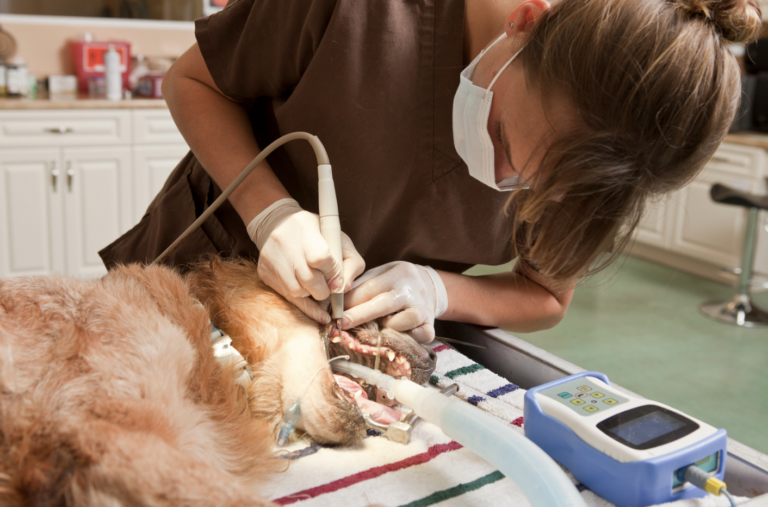
Root canal therapy is a procedure that involves entering the tooth through the crown (top) and removing infected or damaged pulp and surrounding tissue. The empty “canal” is then cleaned and filled with artificial tooth material.
Although removing the pulp from the tooth means the tooth is no longer alive, root canal therapy allows your dog to retain normal function of that tooth. The therapy restores tooth structure and essentially rebuilds your dog’s tooth from the inside out.
Does My Dog Need a Root Canal?
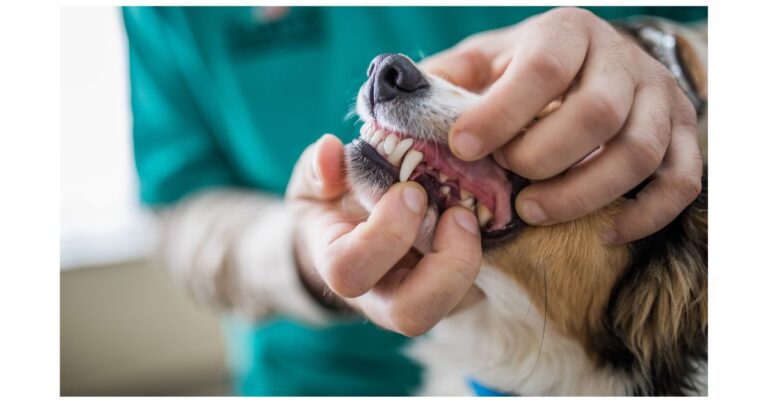
Dogs can cause dental damage and fracture teeth by doing everyday things like chewing, biting, or simply through natural dental decay. If your dog has any broken teeth, it’s best to talk to a veterinary dentist immediately and discuss root canal therapy.
Broken, cracked, or fractured teeth can leave the sensitive tooth pulp exposed to bacteria and possible infection. Not only can your dog lose its teeth, but dental injuries and broken teeth can be very painful. With early detection and root canal, tooth retention is high among dogs who receive this treatment.
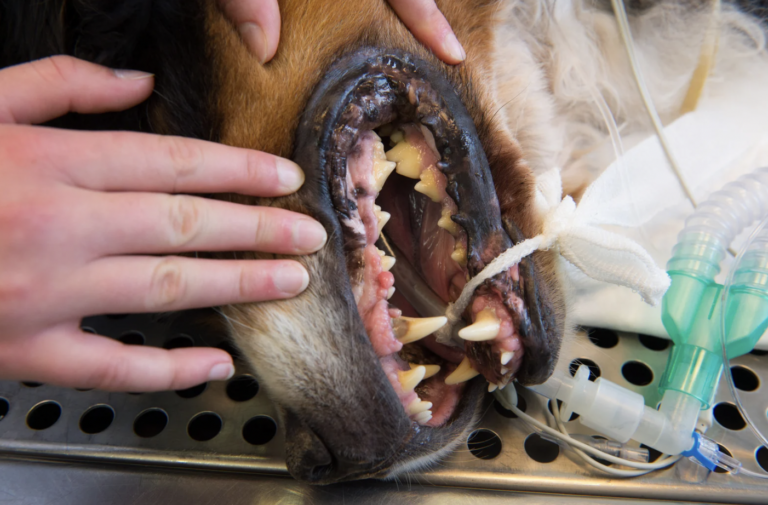
Dog Tooth Extraction vs Root Canal: Benefits & Considerations
Root canal therapy is considered the best option to treat broken and fractured teeth by most veterinary dentists, but there are other treatments available. The most common alternative to dog root canal is canine tooth extraction which involves completely removing the tooth from the root and stitching the gum closed or placing a dental implant.
So, which option should you choose for your dog?
| Root Canal Therapy | Tooth Extraction | |
| Cost… | $1,500–$3,000 | $500–$800 |
| Preserves the tooth? | Yes | No |
| Requires anesthesia? | Yes | Yes |
| Requires stitches? | No | Yes |
Root Canal Therapy for Dogs
In general, root canal therapy is the gold standard for treating broken teeth in dogs. This procedure gives the dog the most comfortable resolution and allows them to retain their natural teeth. Dogs who have this procedure have a very high success rate, and chances of reinjury can be significantly lowered by applying canine dental crowns.
The biggest drawback is the cost of dog root canal therapy. A single tooth may cost upward of $1,500 to $3,000, and this price can be even higher if you choose to give your dog crown tooth caps.
| Pros | Cons |
| Preserves tooth | Prohibitive cost |
| High success rate | Additional cost for dental dog crown |
| Can prevent future injuries |
Tooth Extraction
In some cases, preservation of the tooth may not be possible, or the high cost of root canal therapy may make tooth extraction the only option. Once the tooth has been extracted, most people choose to have the gum closed and leave a blank space where the tooth once was. Some people may opt for cosmetic dentistry options like dental implants, but most veterinarians do not recommend this for dogs and cats.
| Pros | Cons |
| Removes all material, completely preventing further damage | Leaves dog without teeth |
| Less expensive than root canal therapy | Longer period of healing to allow stitches to heal |
Benefits of Canine Dental Crowns
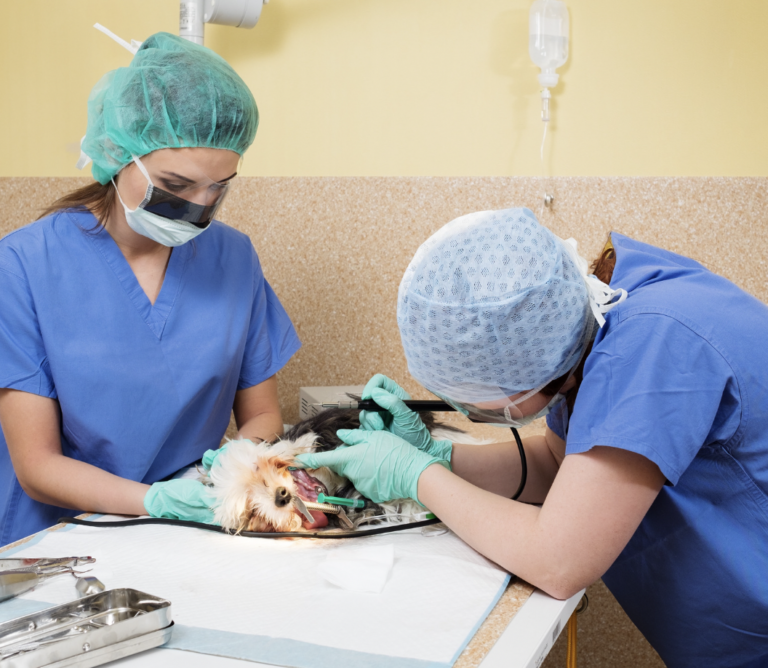
Following root canal therapy for a dog, crowns may be recommended to prevent future damage. Dog crowns protect the top of the tooth from cracking or fracturing and come in a variety of materials. When applied to canine teeth, canine tooth crowns can also prevent chipping general wear. In show dogs, crowns are sometimes placed to preserve dental aesthetics.
Canine dentists offer both metal crowns—typically made from titanium—and natural tooth color crowns. Typically placing a crown requires you to bring your dog in for an additional appointment after their root canal therapy. The dog dental crown should last for the rest of your pup’s life!
Related Posts:
- Never Do THIS To Remove Your Dog’s Skin Tags
- Can Dogs Take Zyrtec?
- 7 Serious Causes of Cloudy Eyes in Dogs





